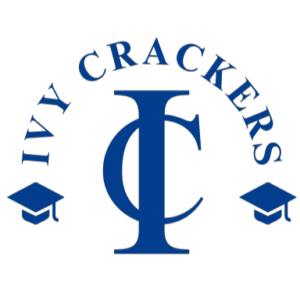GMAT Critical Reasoning Strategy
If you’re one of the many students struggling with GMAT Critical Reasoning (CR), don’t worry – you’re not alone. One issue is that it can be challenging to determine how to approach problems. Typically, students tend to read the argument and immediately attempt to eliminate the incorrect options. This can lead to confusion, unnecessary back and forth, and wasted effort.
For instance, while attempting to eliminate or keep answer option 1, students might forget part of the argument. As a result, they re-read the argument before proceeding to the next option, leading to additional time spent on each question.
A better approach is to read the argument critically, summarise the key points and assumptions made, then consider each answer option carefully, and eliminate those that do not address the crucial elements of the argument or are irrelevant. This helps students stay focused on the argument and solve questions more efficiently.

To build and practice this approach, we should divide the entire process of solving a GMAT CR into 4 parts:
- Identify the question
- Deconstruct the argument
- Find out the goal
- Focus on elimination (strike off the wrong options first)
1) Identify the question
To solve them, the first step is to determine the GMAT CR problem type. This approach greatly benefits the problem-solving process, as we can then apply specific reasoning techniques that are relevant to the particular type of problem that we are dealing with.
Types of major GMAT CR Questions:
A) Describe the role & Describe the argument: These GMAT CR questions are based on understanding the structure of the argument. To answer these questions, you must comprehend the argument’s components.
Example : The first is a judgment that counters the primary assertion expressed in the argument; the second is a circumstance on which that judgment is based.
B) Assumption based questions: These types of questions are common in GMAT CR preparation, mock tests, and the GMAT itself. They rely on at least one assumption made by the author and always contain conclusions. Typically, assumptions are not explicitly stated in the argument but are necessary for the author to reach a conclusion. Assumption based questions can be asked in different ways:
i) You might be simply asked to identify the assumption which supports the argument or to identify the assumption which is flawed
ii) Identify the option which strengthens the conclusion – You will have to identify the assumption which supports the conclusion
iii) Identify the option which weakens the conclusion – You will have to identify the assumption which contradicts the conclusion or doesn’t support the conclusion
iv) Evaluate a conclusion – To make the conclusion valid, we must identify the missing piece of the argument and test that assumption. This requires finding an option that can test the validity of the assumption made.
C) Inference questions: The argument lacks a conclusion and only presents a premise. To answer these GMAT CR questions correctly, you must identify an implied premise from the given argument. Look through the answer choices and choose the one that logically follows from the premise.
D) Explain the paradox questions: The argument lacks a conclusion and only presents a premise. To solve this GMAT CR problem, you need to identify a premise from the given answer options that resolves the contradiction presented in the argument.
2) Deconstruct the argument:
To properly analyze an GMAT CR argument, it’s important to recognize its components: premise, counterpremise, assumption, and conclusion. By doing so, we can identify the type of information presented and figure out what additional information is required to strengthen the argument.
This approach saves time by helping us understand the argument before eliminating answer options and identifying what information is necessary to include.
3) Find out the goal:
As a continuation of previous step, while reading the argument you need to find your goal i.e. what kind of information you will look for when you evaluate the answer options.
For example whether you need to look for an assumption that will strengthen the argument or whether you need to look for an assumption that supports the argument or maybe you need to find an inference (in which case there will be no conclusion in the argument).
You should practice it regularly until it becomes a habit.
4) Focus on elimination:
If you have reached this stage, we can say half the battle is already won. Now you can go through all the answer options and first eliminate the wrong options. You don’t need to think about the right option at this moment.
Now if you just have option left, well task is over, you just choose it and move ahead. However, if you have two or more options left, then just revisit the goal in your mind and eliminate the options that are alluring but wrong.
Summary:
- Let’s identify the type of question and determine any potential traps we might encounter.
- Deconstruct the argument so that we can better prepare for whether to expect an assumption or inference-based question.
- Keep the goal in mind and revisit it, so you won’t have to spend much time on it.
- When eliminating options, get rid of as many wrong ones as possible in the first round. If there are still multiple options, revisit the goal and strike off any alluring options that are incorrect.
To read about the latest changes in GMAT Exam structure and introduction of GMAT Focus Edition, visit our blog “Introduction to the new GMAT Exam Structure: GMAT Focus Edition“, or visit the official GMAT website.
How can IvyCrackers help you?
When it comes to making informed decisions about an MBA/MS/STEM program, there is often no substitute for firsthand knowledge and advice from those who have been through similar experiences. That’s why we, at IvyCrackers, firmly believe that one of the best ways to gain valuable insights about a particular MBA/MS/STEM program or university is to interact with current students and alumni of that very university
Connecting with them can give you a more comprehensive understanding of what it is be part of that university, both in terms of coursework and extracurricular activities, as well as the kind of career options that may be available after graduation. Our “Mentor Session” initiative is designed to help facilitate these connections by pairing you with members of our community who can share their personal experiences and perspectives with you.

Our team of mentors, at IvyCrackers, has been passionately dedicated to helping countless candidates achieve their academic and professional goals. We have worked tirelessly to provide comprehensive services that are tailored to your specific needs, including refining your application essays, conducting mock interviews, perfecting your resumes, and strengthening your profiles. Our commitment to excellence is reflected in the success stories we have helped create, with our clients consistently achieving remarkable feats in their chosen fields.
We believe that everyone has the potential to excel, and we are here to help you unlock that potential. So why not head over to our ‘Mentors’ section now and discover how we can help you fulfill your dreams today?
Visit our Youtube Channel, Linkedin or Instagram Page for regular updates!


